Despite the fact that dinosaurs and mankind were separated by about 65 million years this has never stopped Hollywood from thrusting them together time and time again, whether through tales of humans visiting The Land That Time Forgot or the dinosaurs being brought back through the misuse of science, but today we will be looking at a film that took the Flintstones viewpoint of history with dinosaurs and humans living together at the same point in time.
The movie opens with narration over images that may or may not be interpretations of the Big Bang and we are told that “This is a story of long, long ago, when the world was just beginning” and throughout this sonorous narration we are treated to some bleak yet gorgeous landscapes, but eventually we are introduced to our cast of cavemen in the form of The Rock Tribe. The tribe’s chief is a violent individual named Akhoba (Robert Brown) who seems to enjoy fermenting tensions between his two sons Sakana (Percy Herbert) and Tumak (John Richardson), the latter of these being the hero of the picture, yet it’s a fight between Tumak and his father that results in the son being knocked off the cave’s ledge and being banished to the harsh desert. It’s during his forced exodus that Tumak encounters the film’s first monstrous denizen, unfortunately, fans of Ray Harryhausen who were waiting for another legendary stop-motion creation would have to wait a bit longer as the movie’s first dinosaur is just a green iguana that was optically processed to look huge.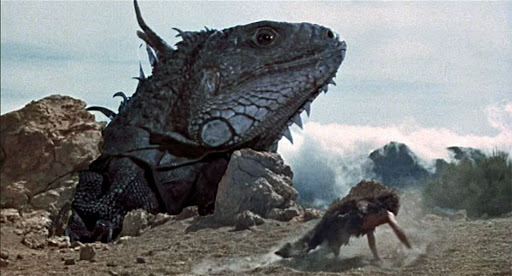
Note: Apparently Harryhausen believed that if the first monsters witnessed were real creatures it would help convince the audience that all that came later were real as well, a decision that he later admitted to being a mistake.
After escaping the “terrifying” giant iguana an exhausted and dehydrated Tumak stumbles upon a group of female members of the Shell Tribe where he is spotted by "Loana the Fair One" (Raquel Welch) and despite his sunburnt visage, she becomes instantly attracted to this stranger. Now, the meeting of our film’s central lovebirds is key to this movie’s plot and Raquel and Richardson had decent on-screen chemistry, but what this sequence truly provides us is that first actual Harryhausen creation, in the form of a giant sea turtle, and this stop-motion creation has all the trademark fun and personality one expects to see from the master, but what one must wonder is why a "sea turtle" was considered a threat giant or otherwise.
“Chill out, I’m not even a carnivore!”
It’s when Tumak is brought back to meet the rest of the Shell Tribe that we learn the true dichotomy of the two tribes presented in this film, the Rock Tribe are presented as a brutal heartless people who would leave the old and infirm die without a second thought, while the Shell Tribe were actually developing a culture and had art and laughter and every argument didn’t end with someone dead. One of the other key differences between the two tribes was in their technological superiority as the Rock Tribe basically had blunted sticks for weapons while the Shell people had spears with hardened rock tips, and this also lent added tension to the plot as Tumak being of the asshole Rock People he wasn’t opposed to just taking what he thinks he deserves, which causes a bit of strife for all concerned, and even though the Shell People appreciated his heroic fighting off of a dinosaur his boorish behaviour gets him exiled...again. Though, to be fair, killing an allosaurus and saving a little girl should, at the very least, earn you that bloody spear.
"From Hell's heart, I stab at thee"
As a prehistoric epic One Million Years B.C. is truly a spectacular offering and is easily superior to the 1940 original, which starred Victor Mature and Carole Landis, but much of that has to do with stunning visual effects by legendary stop-motion artist Ray Harryhausen – who should have been credited as a star right alongside John Richardson and Raquel Welch – and even though the film got off on the wrong foot with that silly iguana and an even more out-of-place giant tarantula, once the “real” dinosaurs make their appearance the film becomes pure gold.
Who needs a love story when you have titanic battles such as this?
Yet this is really a love story and amazing dino-action aside there is much to be impressed with as director Don Chaffey and screenwriter Michael Carreras did an amazing job in creating a movie with virtually no dialogue, other than the occasional grunt or piece of caveman gibberish, and they were able to construct a rather complex story that relied on the audience paying attention instead of spoon-feeding them exposition. This was no easy task as not only did they have Biblical elements of Caine and Able and the Prodigal Son to juggle but also some rather dynamic love story elements, such as the jealous cave girl Nupondi (Martine Beswick) who has her eyes set on Tumak, and then there was the leader of the Shell Tribe Ahot (Jean Wladon) who wasn’t only that keen about Tumak waltzing and walking off with "Loana the Fair One" but who can really blame him?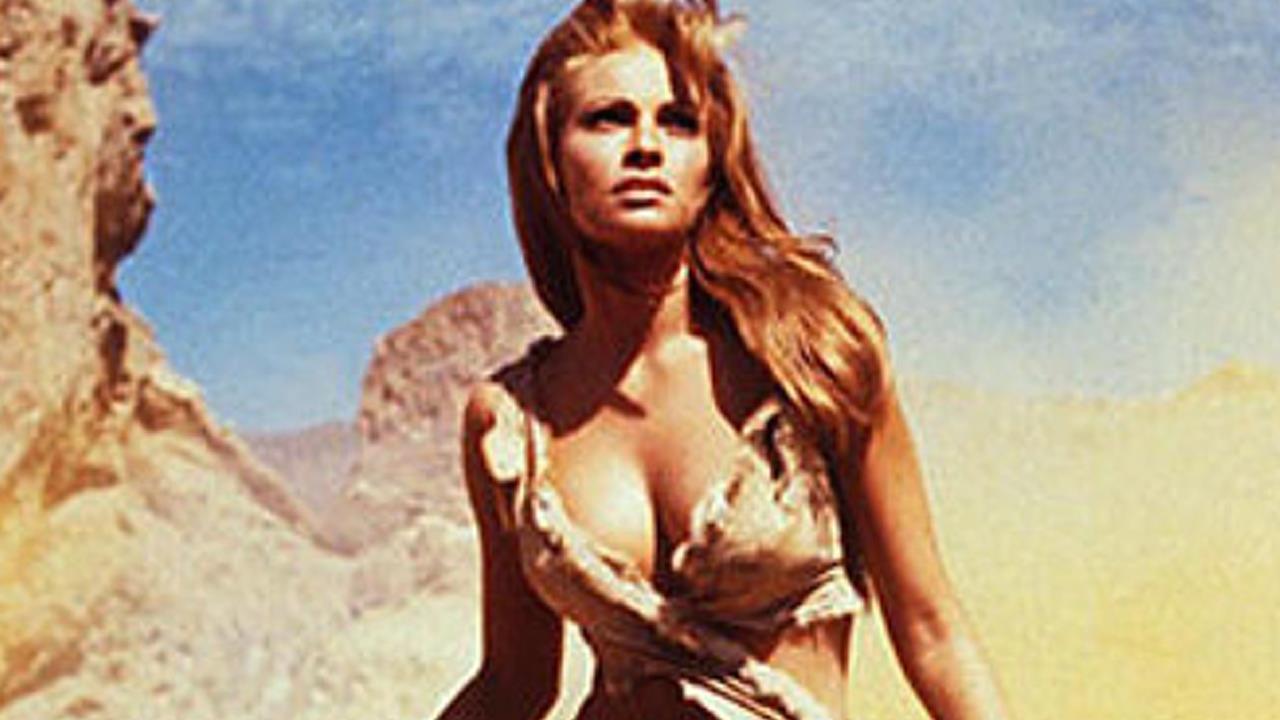
Note: Her two-piece deer skin bikini became an iconic image and has been described as "a marvellous breathing monument to womankind" and not only did it usher many a young man through puberty it also made Raquel Welch a superstar.
The story wraps up when the film’s prehistoric version of A West Side Story is interrupted by a volcanic eruption and the surviving members of the two tribes are melded into one, which gives us hope of a future with all of mankind can putting aside their differences and become one tribe, and though Ray Harryhausen’s dinosaur are the big draw here I think that little message is even more important today than when the film was originally released. Sure, one can consider that Raquel Welch was an exploited sex symbol and was basically there to keep parents happy while the kids watched the dino-action, but I find that One Million Years B.C. has a little more to offer than what one gets at a glance.
Note: This was a Hammer Film production and though they were mostly known for their horror films, starring Peter Cushing and Christopher Lee, it was this movie that was the studio's most successful venture.
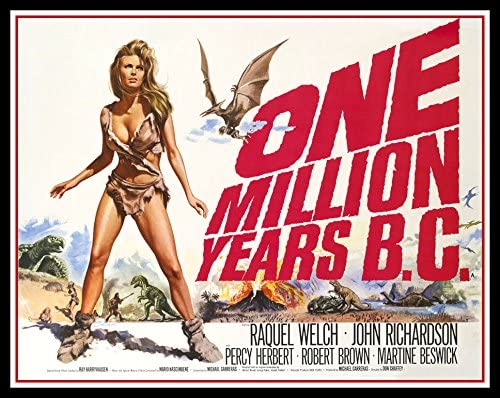
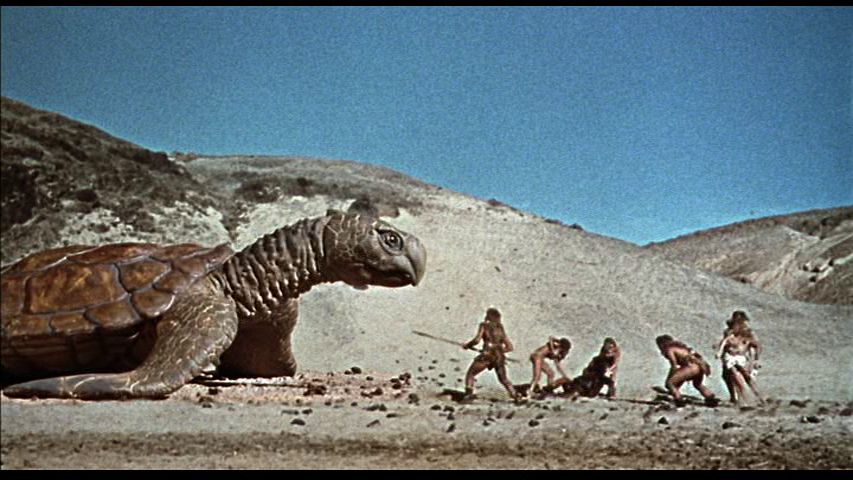
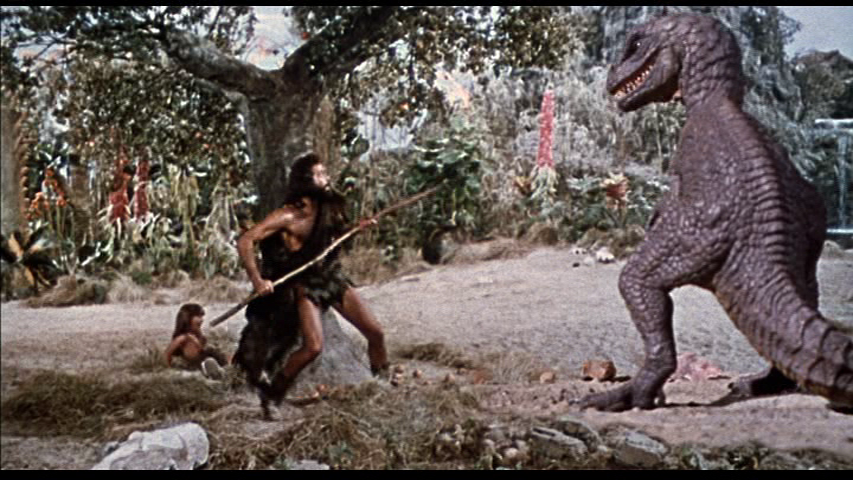
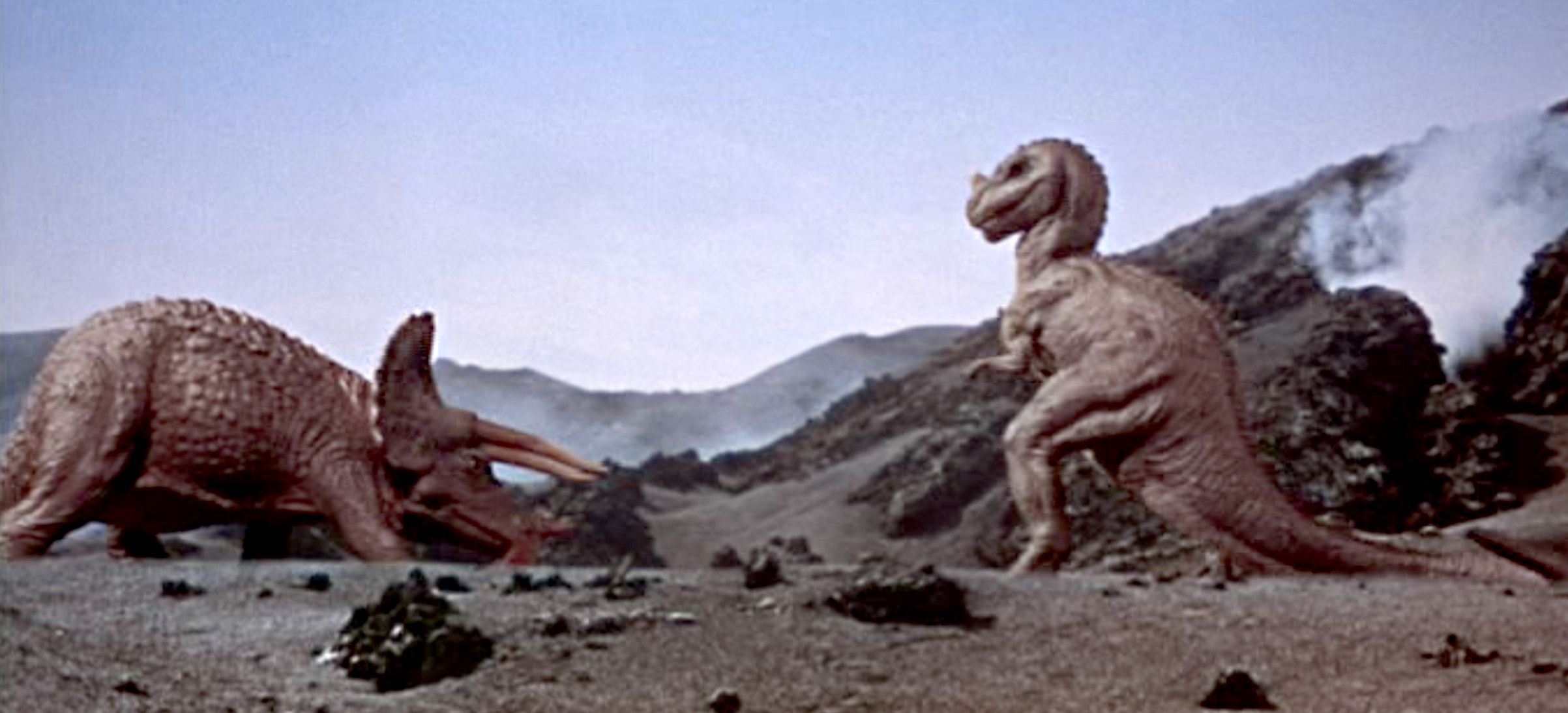

No comments:
Post a Comment